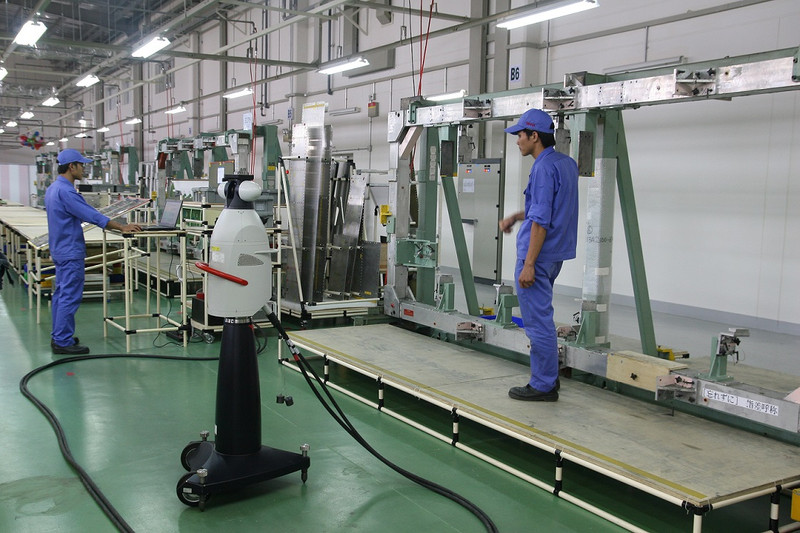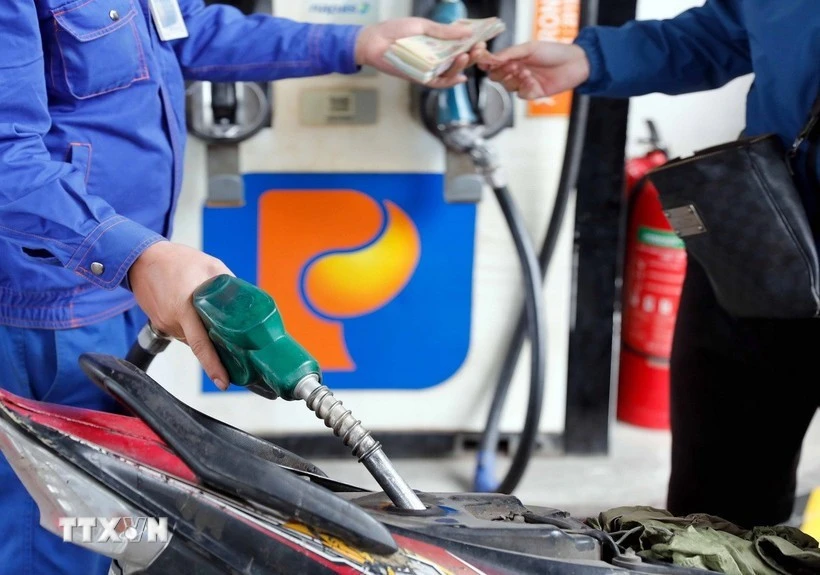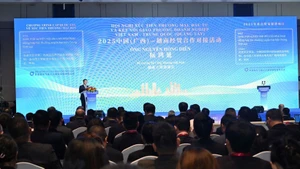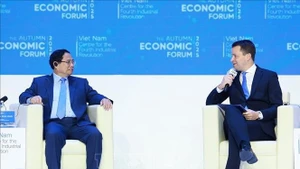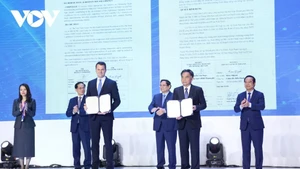According to the General Statistics Office (GSO), in August 2023, the index of industrial production (IIP) of the processing and manufacturing industry in the northern province of Thai Nguyen increased by 6.26%, helping the provincial IIP climb by 6.01%.
According to a report by Thai Nguyen’s Statistics Office, the reason for the growth is that Samsung Electronics Vietnam Thai Nguyen Co., Ltd. launched the new generation of Samsung Galaxy Z Flip5 and Galaxy Fold 5 phones to the Vietnamese market in the end of July.
So, as stated by the Ministry of Industry and Trade in a recent report on industrial production prospects in the last months of 2023, Vietnam’s economy still maintains macroeconomic stability and social stability. In the context of complicated world geopolitical and economic fluctuations, many difficulties and challenges will continue to create advantages in attracting investment and promoting production and business in the coming time.
According to the GSO, the IIP of the whole industrial sector in August 2023 is estimated to expand by 2.9% over the previous month and 2.6% over the same period last year, which the GSO said is “more positive” than the rates recorded in the previous month.
In August, the processing and manufacturing industry climbed by 3.5%, electricity production and distribution went up by 3.7%, and water supply, management and treatment of waste and wastewater ascended by 1.8%, while the mining industry alone decreased by 6.2%.
Since June 2023, Nguyen The Nguyen, like the other 500 employees at a Republic of Korean (RoK) garment and textile company in the northern province of Hung Yen, has had to work almost 10 hours a day – including overtime – thanks to the company’s big orders from the RoK and Europe.
“Production was reduced before June due to a lack of export orders, and now all workers have come back to work. We are happy about that because our income has returned to normal,” Nguyen said.
In another case, Pham Bich Van, an engineer from Japan’s furniture manufacturer Nitore also said she has returned to normal work after four months of a temporary cutback initiated by the company.
“Big orders have been landed by the company, and hundreds of employees have come back to work since July,” Van said.
Nevertheless, the GSO also said that poor performance of many enterprises and the global grey economic situation have resulted in a year-on-year drop of 0.4% in the eight-month IIP.
The year-on-year eight-month IIP in the years from 2019-2023 were recorded at 9.5, 2.2, 5.5, 9.2, and -0.4%, respectively.
The eight-month IIP of 2023 for the processing and manufacturing reduced by 0.6% as compared to the corresponding period last year when such an IIP went up by 10.1% year on year. The IIP of the industry of water supply and waste management and treatment expanded 4.8%, and the mining industry declined 2.5% year on year. Meanwhile, the IIP of the electricity production and distribution increased only 1.7% year on year.
Vietnam Electricity (EVN) reported that in the first seven months of this year, the total produced electricity volume is estimated to reach 161.8 billion kWh, up only 2.69% as compared to the same period las year and lower than the year’s plan by 862 million kWh.
EVN also reported that in this year, it is expected that the group will continue facing increased difficulties in production and business activities due to a very high climb in assorted input materials. For example, the price of imported coal is set to increase by 2.32 times as compared to 2021, and 5.3 times over that of 2020; while the oil price is expected to increase by 1.22 times against 2021 and 2.06 times compared to 2020. What is more, the exchange rate in 2023 is also forecast to stay higher than the average level of 2022 – affecting the group’s performance.
The GSO also noted that, in the past eight months, the production index of several key sectors witnessed a year-on-year increase, including coke production and refined petroleum products (9.9%); tobacco products (8.6%); rubber and plastic products (8.4%); prefabricated metal products (except for machinery and equipment) 7%; metal ore mining (6.5%); chemicals and chemical products (5.6%); and foodstuff (5.4%).
However, according to the GSO, since early this year, businesses’ confidence in general seem not to improve due to lingering difficulties. For instance, nearly 5,200 enterprises suspended operations in August, up 40% year on year. Another 5,200 waited for completing dissolution procedures, up 17% year on year.
In the first eight months of this year, Vietnam saw 103,700 newly established businesses registered at $40.9 billion, using nearly 669,000 workers. This was up by 2.3% in the number of enterprises but down by 14.7% in registered capital and down by 3.9% in the number of employees – as compared to the same period last year.
If another 53.74 billion USD registered by 32,300 operational enterprises is included, the total capital supplemented into the economy in the period stood at 94.65 billion USD – down by 38.3% year on year.
Meanwhile, the first eight months also saw 71,800 businesses with halted operations – up 20.5% as compared to the corresponding period last year; 41,100 enterprises stopped operations and waited for dissolution procedures – up 26.7%; and 11,800 enterprises completed such procedures. On average, about 15,600 businesses were kicked off from the market every month.
The government is expecting the economy to grow 6.5% this year, but difficulties in industrial production are expected to dent this goal, according to the World Bank which forecasts a moderate growth of 4.7% in 2023, gradually accelerating to 5.5% in 2024 and 6% in 2025.
“Vietnam’s economy is being tested by internal and external factors. To boost economic growth, the government can support aggregate demand through effective public investments, thereby creating jobs, and stimulating economic activity,” said Carolyn Turk, World Bank country director for Vietnam. “Beyond short-term support measures, the government should not lose sight of structural institutional reforms – including in the energy and banking sectors – as they are imperative for long-term growth.”
According to the World Bank, although softening, domestic demand is expected to be the main driver of growth in 2023. Private consumption will remain resilient with year on-year growth of 6% - below its pre-pandemic growth of 7% year on year in 2019 – and contributing 3.4 percentage points to GDP growth. Overall, investment will contribute 1.8 percentage points to growth.
Private investment is forecast to remain subdued, growing 4.3% year on year compared to 8.2% year on year in 2019 due to uncertainties in the external environment, and contributing 1.2 percentage point to GDP growth.
